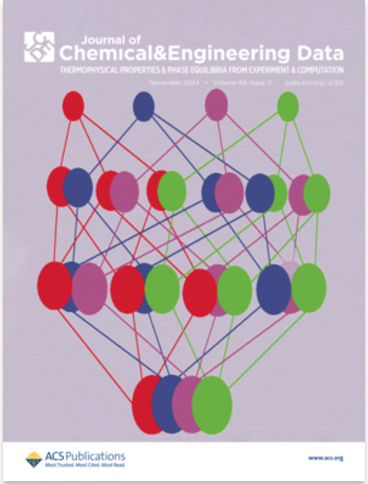在国际III期NARLAL2试验中,异质FDG引导剂量递增治疗局部晚期NSCLC后的总生存率。
IF 2
3区 工程技术
Q3 CHEMISTRY, MULTIDISCIPLINARY
Journal of Chemical & Engineering Data
Pub Date : 2024-06-10
DOI:10.1200/jco.2024.42.17_suppl.lba8069
引用次数: 0
摘要
LBA8069 背景:接受放疗(RT)的局部晚期非小细胞肺癌(LA_NSCLC)患者(pts)的生存率和局部区域控制率令人沮丧,尽管他们辅助使用了Durvalumab。然而,自从剂量递增试验 RTOG0617 出现意外结果以来,这些患者的剂量递增问题一直备受关注。因此,我们需要一种新的方法来提高肿瘤的剂量。一种可行的方法是采用非均匀剂量分布的立体定向体放射治疗(SBRT)原理。SBRT 对早期肺癌的局部控制效果非常好。国际多中心NARLAL2(治疗LA_NSCLC的新型RT方法)III期剂量升级试验将LA_NSCLC患者随机分为标准66 Gy/33分次(F)和异质FDG-PET驱动的剂量升级两种,目标是GTV-肿瘤PET的平均剂量为95 Gy/33分次,GTV-结节PET的平均剂量为74 Gy/33分次,同时严格控制危险器官的剂量。我们在此介绍招募结束一年后的总生存率(OS)数据。方法从丹麦和挪威的七家机构招募年龄≥18 岁的 LA_NSCLC 患者。资格标准包括 ECOG PS 0-1、组织学或细胞学确诊的 NSCLC IIB-IIIB 期、签署知情同意书、临床上可接受的常规 66 Gy/ 33 F 的 RT 计划。患者被随机分配到任一治疗组(1:1,根据中心和组织学进行分层)。试验的目的是通过为每位患者(每个治疗组一个)制定两个平均肺剂量和肺V20Gy相匹配的RT计划(在随机化之前),在治疗组内实现等肺毒性。随机化后的随访(FU)安排在 RT 治疗期间每周一次,2 年内每 3 个月一次,3 年内每 6 个月一次。在随访期间进行 CT 扫描和毒性评分。所有中期分析均在无干预的情况下进行(毒性和OS)。试验的主要终点是随机分组后局部区域治疗失败的时间。次要终点包括OS、急性和晚期毒性。样本量计算要求研究招募 350 名患者。2023 年 3 月,最终完成了预计划人数的招募。该试验已在 ClinicalTrials.gov 注册(NCT02354274)。结果:从 2015 年 1 月到 2023 年 3 月,350 名患者被随机分配:标准组和升级组分别有 177 名和 173 名患者。两组患者在年龄、性别、分期和PS方面非常均衡。标准组的GTV-肿瘤剂量为66.5 Gy [66.2, 67.1](中位数[IQR]),升级组为88.1 Gy [84.9, 90.4]。标准治疗组和升级治疗组患者的中位生存期分别为 35.8 个月(m)和 51.6 个月(P = 0.36)。中位生存时间为 50.8 个月(反向 Kaplan-Meier)。结论在NARLAL2治疗中,剂量升级对OS是安全的。临床试验信息:NCT02354274 。本文章由计算机程序翻译,如有差异,请以英文原文为准。
Overall survival following heterogeneous FDG-guided dose-escalation for locally advanced NSCLC in the international phase III NARLAL2 trial.
LBA8069 Background: The survival and loco-regional control for patients (pts) with locally advanced non-small cell lung cancer (LA_NSCLC) treated with radiotherapy (RT) are dismal despite adjuvant Durvalumab. However, there have been concerns about dose escalation for these pts since the unexpected result of the dose-escalation trial RTOG0617. A novel approach is therefore warranted to escalate the dose to the tumor. A possible approach is to use the principle from stereotactic body radiotherapy (SBRT) with inhomogeneous dose distribution. SBRT has demonstrated excellent local control in early-stage lung cancer. The international multicenter NARLAL2 (novel approach to RT for LA_NSCLC) phase III trial on dose escalation, randomized pts with LA_NSCLC between standard 66 Gy/ 33 fractions (F) versus heterogeneous FDG-PET driven dose escalation, aiming at mean dose to GTV-tumorPET 95 Gy/ 33 F and mean dose to GTV-nodePET 74 Gy/ 33 F while strictly respecting dose to organs at risk. We here present the data on overall survival (OS) 1 year after the end of recruitment. Methods: Pts aged ≥18 years with LA_NSCLC were recruited from seven institutions in Denmark and Norway. Eligibility criteria included ECOG PS 0-1, histological or cytological confirmed NSCLC stage IIB-IIIB, signed informed consent, and a clinically acceptable plan for RT with conventional 66 Gy/ 33 F. PET-CT and brain MR were part of staging. Pts were randomly assigned to either treatment group (1:1, stratified for center and histology). The trial aimed to have iso-lung toxicity within the treatment arms by creating two RT plans (before randomization) for each patient (one for each treatment arm) with matching mean lung dose and lung V20Gy. The follow-up (FU) were scheduled weekly during RT, every 3rd month for 2 years, and every 6th month for another 3 years after randomization. At FU visit a CT-scan and toxicity scoring were performed. All interim analyses were passed without interventions (toxicity and OS). The trial's primary endpoint was time to loco-regional failure from randomization. Secondary endpoints included OS, acute, and late toxicity. The sample size calculations requested 350 pts to be enrolled in the study. Recruitment of the pre-planned number of pts finalized in March 2023. The trial was registered with ClinicalTrials.gov (NCT02354274). Results: From January 2015 to March 2023, 350 pts were randomized: 177 and 173 pts in standard and escalated arms respectively. The two groups were well-balanced regarding age, gender, stage, and PS. The dose to GTV-tumor was 66.5 Gy [66.2, 67.1] (median [IQR]) in the standard arm and 88.1 Gy [84.9, 90.4] in the escalated arm. Median OS were 35.8 months (m) and 51.6 m for pts treated in the standard and escalated arm, respectively ( p = 0.36). Median FU time 50.8 m (reverse Kaplan-Meier). Conclusions: Dose escalation is safe in the NARLAL2 setting with respect to OS. Clinical trial information: NCT02354274 .
求助全文
通过发布文献求助,成功后即可免费获取论文全文。
去求助
来源期刊

Journal of Chemical & Engineering Data
工程技术-工程:化工
CiteScore
5.20
自引率
19.20%
发文量
324
审稿时长
2.2 months
期刊介绍:
The Journal of Chemical & Engineering Data is a monthly journal devoted to the publication of data obtained from both experiment and computation, which are viewed as complementary. It is the only American Chemical Society journal primarily concerned with articles containing data on the phase behavior and the physical, thermodynamic, and transport properties of well-defined materials, including complex mixtures of known compositions. While environmental and biological samples are of interest, their compositions must be known and reproducible. As a result, adsorption on natural product materials does not generally fit within the scope of Journal of Chemical & Engineering Data.
 求助内容:
求助内容: 应助结果提醒方式:
应助结果提醒方式:


